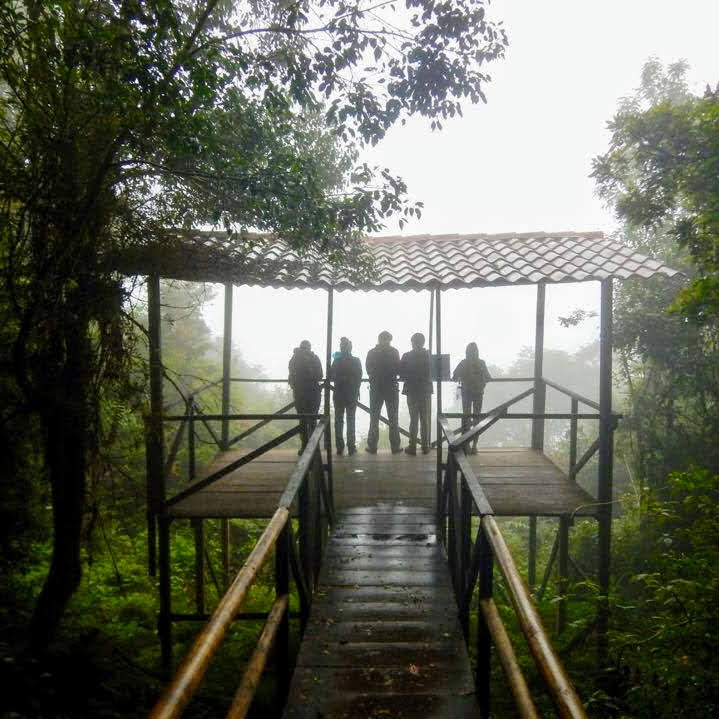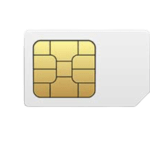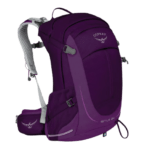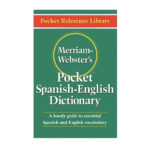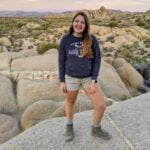Costa Rica – Discover This Tropical and Cultural Gem
I spent four months in Costa Rica and this beautiful country absolutely stole my heart. The pristine beaches to the luscious cloud forest, the bustling city centers to the quiet volcanoes, this country has something for everyone. I was fortunate enough to spend a semester studying the effects of pesticide mixtures on different species of river organisms. During this time, I lived two months in San Jose and two months in Heredia. Since I was in college when I lived in Costa Rica, most of the tips for the cities below are budget-friendly, utilizing Airbnbs and public transportation.
Need to Know:
Currency: Colon, check exchange rate
Language: Spanish
Airports:
San Jose – SJO
Liberia – LIR
Electrical Outlets: 220 volt electricity. Two-pronged flat type plug like found in the US
Health and Safety Tips: Costa Rica is one of the safest Central American countries, but this doesn’t mean you should let your guard down as a foreign traveller. Keep a close eye on your valuables and belongings at all times. Especially on buses, I recommend keeping your bags by your feet and not putting them in the overhead compartments. When it comes to beach safety, just use common sense. Don’t go to the beach after dark, don’t bring valuables with you to the beach, and make sure you ask locals about riptide, rip currents, and undertow. When it comes to health tips, I recommend not drinking the tap water outside of San Jose. I drank the tap water in San Jose and Heredia with no issues, but got sick when I drank the tap water in Puerto Viejo. It is best to just play it safe and drink bottled water, as well as wash your own fruit and veggies with filtered water.
Things to See and Do in San Jose
Mercado Central: Mercado Central is where you can go to get anything from fish for tomorrow’s dinner to a quick ceviche for lunch, from a pound of nutmeg for your pantry to souvenirs for your friends back home. Be sure to check out the little restaurant stalls inside, called sodas. You’re bound to find a great deal on a casado (typical plate of rice, beans, plantains, meat, etc.), or a refreshing fruit juice.
Plaza de Cultura: This is the main plaza in San Jose, with the National Theater bordering one side. I would highly recommend seeing a show in the National Theater if you are going to be in San Jose for a little while. This is a popular plaza for street performers, vendors, and for people to just hang out. You will almost always see kids playing in the fountain if it is warm outside.
El Museo Nacional: El Museo Nacional was my favorite of the museums I went to in Costa Rica. It starts with a beautiful butterfly garden, then you follow through the nicely maintained grounds to the different exhibits. It is easy to follow and provides a great background on Costa Rica’s history. Looking out from the museum, there is a courtyard (Plaza de la Democracia). Just beyond the courtyard is a row of vendors that make up the Artisan Market. Browse through a pick up a nice gift for someone back home.
La Sabana: Outside of downtown San Jose, you will find La Sabana park. This park is famous for being home of the National Stadium where Costa Rica’s National Team (La Sele) plays. This sprawling park is always hopping with runners, soccer games, zumba classes, you name it. You can also check out the free museum of Costa Rican Art, located right in front of La Sabana.
Barrio Escalante: Be sure to check out this hip and upcoming area of San Jose, known for its upscale gastronomy. You will find dozens of restaurants and bars lining the streets of the neighborhood. This is a great place to have a nice dinner, try some unique food (like octopus or boozy ice cream), or grab a craft beer.
Pre-Colombian Gold Museum: My second favorite museum in San Jose is located right under the Plaza de Cultura. The well-curated museum has an impressive collection of artifacts and is a nice way to spend a rainy afternoon.
Day Trips from San Jose: There’s also a ton to see right outside of San Jose. Check out my blog on day trips from San Jose!
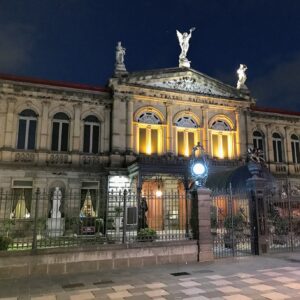
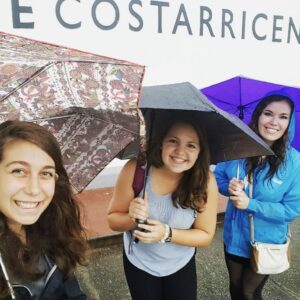
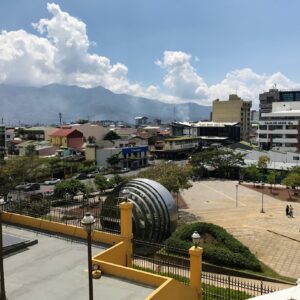
Things to See and Do in Heredia
Nicolás Ulloa Central Park: Serving as one of the central plazas of Heredia, you will find this park filled with people meeting up with friends, kids playing after school, or locals simply reading a book on a park bench. It is a great place to wander around and check out the surrounding area. Just two blocks south you will find the Heredia Central Market, a popular spot to grab some produce or an empanada.
Estadio Eladio Rosabal Cordero: This stadium is the home of Heredia’s soccer team, C.S. Herediano (or known locally as El Team). If you are walking around the neighborhood, I would advise you to not wear a Saprissa (San Jose’s team) jersey, for the teams have a huge rivalry. Considering catching a game at the stadium while in Heredia. You can buy tickets at the door for a pretty cheap price.
La Universidad Nacional: When I was living in Costa Rica, I did my research in the Ecotoxicology lab at La Universidad Nacional, commonly known as “la una.” As the second largest university in Costa Rica (right behind UCR – Universidad de Costa Rica), this is a great place to learn about local events happening in the area and find some great restaurants in the surrounding neighborhood.
Volcán Barva: This is a great day trip from Heredia if you are looking to do some hiking. It can be a bit tricky to get there without a car, so we took an Uber from Heredia to about 3 km from the park entrance. The road gets rough, so we had to hike the rest of the way. Once in the park, there is no cell service, so to get back down, we hiked the 10 km downhill to the bus stop. It is a little green and yellow pavilion with a single bench near a bar. The hike is all downhill and beautiful. The bus costs 650 colones to get to Heredia and leaves at 5PM and no other times so don’t miss it! Entrance fee was $12 for foreigners because it is part of Parque Nacional Braulio Carrillo. There are tons of good hiking trails to explore. We did a nice 8 km hike, decently uphill to the crater lake and two look out points.
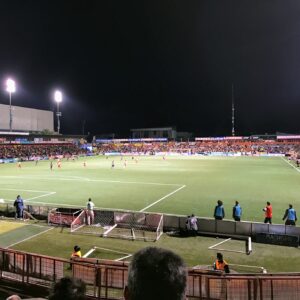
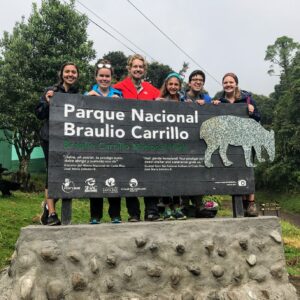
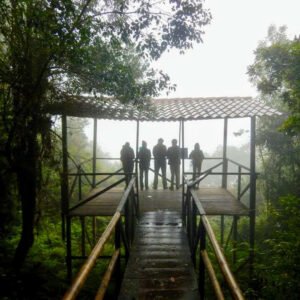
Things to See and Do in Monteverde
Monteverde Reserve: Visiting the Monteverde Reserve is the main highlight of being in the Monteverde Cloud Forest. You can use the city bus (600 colones each way) to get to the reserve. The trails were clearly marked throughout the preserve, but it also provided peace and tranquility with the crowds being fairly spread out. There is a stunning view point, a suspension bridge, and a double waterfall. Just take your time to absorb the beauty of the cloud forest. After the reserve, be sure to stop in at the Hummingbird Gallery which is a free place with hummingbird feeders out attracting all kinds of beautiful birds.
Zip-lining: We went zip lining with the Original Canopy Tour. It was the best deal we could find and well worth the cost! The guides are great and we requested them to speak to us in Spanish the whole time. We did a Tarzan swing, tons of cables, rappelled down, then climbed up inside a huge Ficus tree and rope ladder. The last few cables were crazy awesome! Super high, long and fast. The tour lasted over 3 hours and we were all very content with our decision to go! Transportation to and from our Airbnb was included.
Ficus Tree: Our Airbnb host told us about a big Ficus Tree hidden in the woods where we could climb super high inside the tree. It was a pretty strenuous walk from the AirBnb, but well worth the sweat because it was amazing to see and monkey around! I honestly don’t remember how to get there, but you can ask around at restaurants and bars and I’m sure someone can help you find it!
Night Walk: The night hike with Kinkajou Night Walk Tours was also a highlight. A guide lead us on a short hike pointing out sloths, a black porcupine, a kinkajou (SO COOL), lots of bugs and birds. This also included transportation to and from our accommodations.
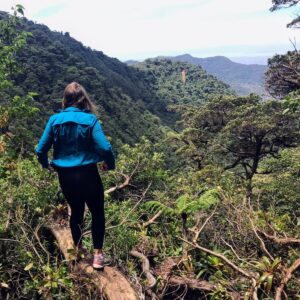
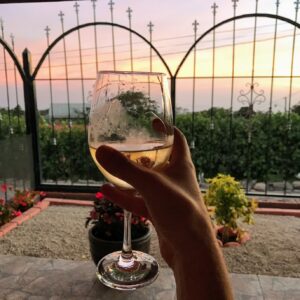
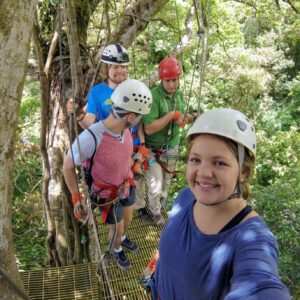
Things to See and Do in Cartago
Sanitorio Dúran: Old tuberculosis ward, orphanage, and jail. This abandoned building is supposedly haunted and considered one of the creepiest sights in Costa Rica. Beyond the empty hallways and chilling history, it is actually quite a beautiful place with a great view.
La Basilica Los Angeles: This beautiful basilica in central Cartago towers over the square and attracts religious tourists from all around. Be sure to go around back and underneath to read the story of how a little peasant girl in Cartago found a figurine of the Virgin Mary and baby Jesus that she took home multiple times but it always re-appeared back on the same rock. Many people walk from their home in Costa Rica to the Basilica to ask Mary for favors. They give her items that represent what they need. It is common to see people approaching the front of the church by walking on their knees.
Mirador Orosi: This is a beautiful park with a great view of the valley and river. You usually don’t have to pay to enter, but be sure to have some identification if you’re driving there. It is a great spot for a lazy afternoon or a picnic with friends.
Volcán Irazu: There is a bus that runs from San Jose directly to Volcán Irazu. The stop is right across the street from Teatro Nacional and there is a sign that says “Volcán Irazu.” The bus costs 2365 Colones each way and leaves at 8 a.m. The entrance fee to the park is $15 for non-residents. Within the park, there are two craters and a nice hiking area. On a clear day you can see both the Pacific and Atlantic Oceans from the top. It isn’t a long hike, but a cool place to explore and get a good view of the crater. The crater lake was dry when we went, but usually it has beautiful turquoise water. The volcano has 23 recorded eruptions with the latest eruption lasting only 1 day on December 8, 1994.
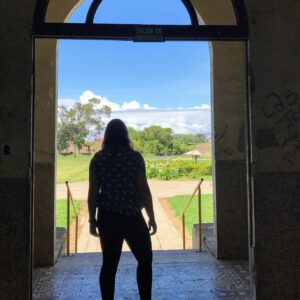
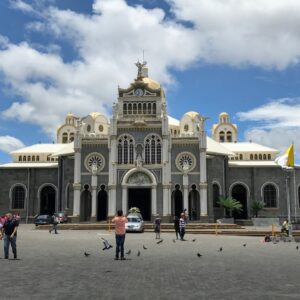
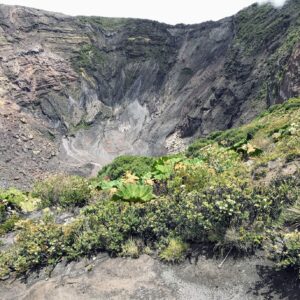
Things to See and Do in Manuel Antonio
Manuel Antonio National Park: A beautiful preserve that mixes beach and jungle landscapes. It costs $16 to get into the park (no discount for students). We didn’t do a tour because we were college students on a tight budget, but if you want to see animals, I would definitely recommend splurging for a tour. The park is not teeming with animals, you really have to search for them in the main park area. The guides are experts at spotting wildlife and they all work together to locate animals in the park. Being a popular destination, you can expect it to be pretty crowded, especially on weekends. The main beach has capuchin monkeys everywhere that will come dangerously close to you, so put your snacks away and keep your distance. You can also opt for hiking Punta Catedral. The trail goes up and down a lot of stairs, but worth it for some great views. Then spend the afternoon chilling on one of the pristine beaches. Also be sure to pack some food because there isn’t anywhere to buy food within the park and you are not allowed to exit and re-enter.
Beaches: The beaches inside Manuel Antonio National Park are some of the best in the area. If you go early enough in the morning, they can be pretty quiet. If you’re looking for serenity, I would avoid Playa Espadilla beach outside of the park. My favorite beach we went to was Playa Biesanz. You can take the city bus and then walk a ways to the beach. You have to take a hidden trail that cuts through a fenced in forest area that is difficult to spot from the road. I rented a paddle board and a beach chair for 8000 colones. It was the perfect spot for a more local beach experience. You can read more about this in my weekend trips blog post!
Ronny’s Place: Located way up on a cliff, you have to check out this incredible spot for a ceviche, a cocktail, and the most beautiful view of the sunset.
Marisqueria Jiuberth: Quite possibly the freshest seafood I’ve ever had. Swing by for a delicious meal and support a local family restaurant.
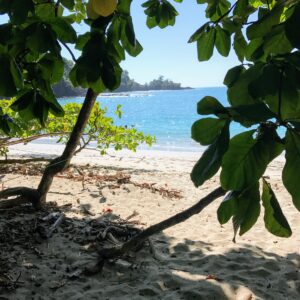
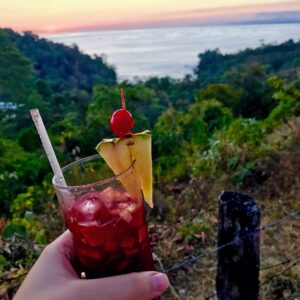
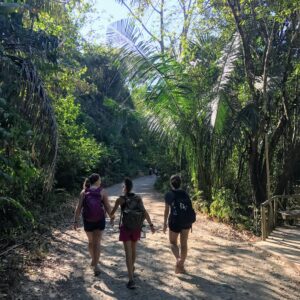
Things to See and Do in Puerto Viejo
Cahuita National Park: Take your time wandering the trails that run through the jungle along the coast. You will likely see a ton of crabs and other little creatures. Once you find your favorite spot, take a break to swim in the calm waters. There was an option to get off at the first bus stop (Punta Vargas) and hike the whole trail to the main entrance, which takes about 2.5 hours. There is also an option to snorkel for about $30. We didn’t do this, but it looked awesome!We used the local bus from Cocles to Cahuita, waited for 40 minutes for it to come and then the ride was another 45 minutes. There are two stops for Cahuita and we got off at the second one for the main park entrance where we payed the donation only entrance fee. The bus was pretty inconvenient and the taxi is not much more expensive, so I’d recommend taking a taxi.
Rent Bikes and Beach Hop: The main thing to do in Puerto Viejo is enjoy the beautiful beaches. There is an endless list of wonderful spots all in a short distance along the coast. We rented bikes in Puerto Viejo to ride from beach to beach. It is a nice 8 mile bike ride down to Manzanillo. Along the way you will find stunning beaches such as Playa Cocles and Punta Uva. These are all great places to stop for a beach picnic or a swim in the ocean.
Take a Surf Lesson: Playa Cocles is the most popular place to try catching a wave. There are many places in town where you can find a rental and lesson company, but I recommend Totem Surf School. Lessons are about $60 for two people for two hours.
Jaguar Rescue Center: Definitely one of the more popular attractions in Puerto Viejo, the Jaguar Rescue Center offers tours for $22 to see the animals that they are rehabilitating. They will also provide information about the native animals of Costa Rica and the work they do on conservation.
Eat Rice and Beans at Lidia’s Place: You have to try Puerto Viejo’s famous dish, Rice and Beans. Don’t be mistaken, this is not the same as Arroz y Frijoles. This is a special dish made with coconut milk and delicious seasoning. I’d recommend checking out Lidia’s Place for some of the best in town.
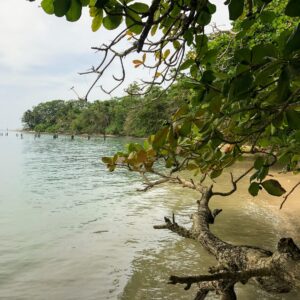
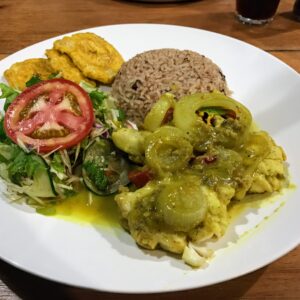
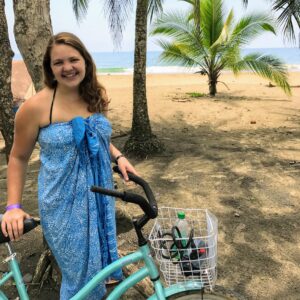
Planning Your Trip
Accommodations – When I was in Costa Rica, I lived with wonderful host families. I recommend staying in Airbnbs with host families for local recommendations. Otherwise, if you are staying in San Jose, I recommend staying in the Barrio Escalante area. It is a lovely neighborhood with lots of good restaurants nearby.
Food – There is so much incredible food to try in Costa Rica, from the coffee in the hillsides to rice and beans in Puerto Viejo. The standard dish you will get at a local restaurant is a Casado, a plate of rice, beans, plantains, meat, and salad. This is a typical lunch and a must have while in Costa Rica. Make sure you try a variety of dishes wherever you go!
Getting Around – I mainly used local buses and ubers to get around Costa Rica. If you are not comfortable using local buses, there are plenty of private shuttles you can hire to take you around the country.
August 10, 2021




